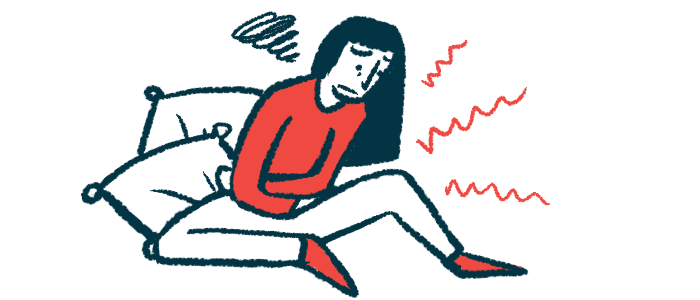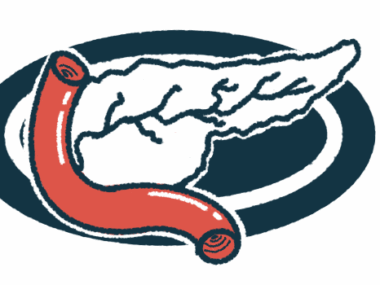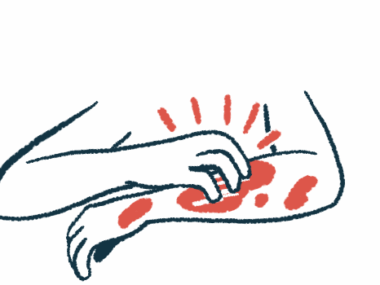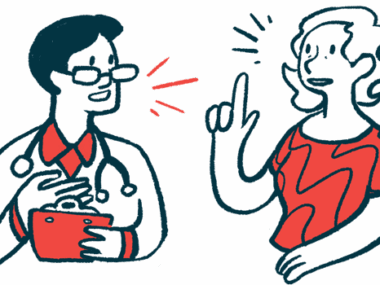Givlaari successfully eases acute AIP symptoms in girl, 16: Report
In US, therapy approved only for adults with acute forms of porphyria
Written by |

The case of a 16-year-old girl with recurrent acute intermittent porphyria (AIP) attacks who saw her symptoms ease after she started treatment with Givlaari (givosiran) has been reported in the U.S.
The injectable therapy in the U.S. is approved only for adults with acute forms of porphyria, unlike in Europe, where it can be prescribed for patients ages 12 and older under its approval by European Union regulators. Another case of successful treatment with Givlaari in a 12-year-old boy also was recently reported in Italy and noted in this case report.
According to the researchers, “in pediatric patients, [Givlaari] has improved disease states and been well tolerated.”
As such, “[Givlaari] usage in the pediatric population should be further investigated to provide earlier disease-modifying therapy to achieve better patient outcomes and quality of life,” the team wrote.
The case study, “Givosiran for the Treatment of Pediatric Acute Intermittent Porphyria,” was published in the Journal of Pediatric Hematology/Oncology.
Teen first treated for abdominal pain, constipation
AIP, the most common form of acute porphyria, is caused by mutations in the HMBS gene that disrupt the production of heme, a molecule essential for transporting oxygen throughout the body. As a result, heme precursors, specifically aminolevulinic acid (ALA) and porphobilinogen (PBG), accumulate to toxic levels in the body.
As with other acute porphyrias, AIP is characterized by sudden and potentially severe attacks that cause symptoms including abdominal pain, gastrointestinal and urinary issues, and neurological problems. The disease is most commonly diagnosed in early adulthood, though symptoms may start during childhood.
In this study, clinicians in Massachusetts described the case of a teenage girl who was admitted to their hospital after four days of increasingly worse generalized abdominal pain that spread to the back, as well as vomiting episodes, chest pain, and constipation.
She had a medical history of anorexia nervosa, an eating disorder associated with an intense fear of gaining weight, which can lead to significant weight loss. Laboratory and imaging tests did not detect any significant alterations. She was treated for constipation and discharged once her abdominal pain eased.
After three months, she returned to the hospital with similar symptoms and a 6 kg (about 13 pounds) weight loss.
During her hospitalization, she developed paresthesia — numbness, burning, or tingling sensations — in her hands and feet. This progressed to hand contractures, which happen when tissues in the palms and fingers thicken and tighten, limiting normal movements. She then started experiencing generalized seizures.
Laboratory analyses indicated her blood sodium levels were low, and she was transferred to the pediatric intensive care unit for further management.
Additional tests indicated her total blood porphyrin levels were high, as were the levels of PBG in the urine, consistent with the presence of acute porphyria.
She received hemin infusions to supply heme and reduce the levels of porphyrins, along with carbohydrate therapy, which can also help reduce porphyrin levels.
Genetic testing revealed the presence of a mutation in the HMBS gene, confirming the diagnosis of AIP.
Girl given Givlaari due to severity, frequency of AIP attacks
In the following three months, the teen had two AIP attacks requiring hemin therapy. At this point, considering the severity and frequency of her attacks, clinicians decided to start the patient on monthly treatment with Givlaari. The therapy was given on a compassionate use basis, the team noted.
Givlaari works by reducing the production of an enzyme that’s overactive in patients with acute forms of porphyria, causing ALA and PBG levels to rise. The medication, therefore, is expected to reduce the buildup of ALA and PBG, thereby preventing acute attacks and easing disease symptoms.
In this patient, Givlaari almost normalized ALA and PBG levels in urine. However, the levels of homocysteine — an amino acid, or protein building block — became unusually high a month following treatment initiation. This is a known and potentially harmful side effect of Givlaari.
Homocysteine levels decreased once the teenager started receiving vitamin B6 supplementation two months after beginning treatment with Givlaari.
[Givlaari] can reduce AIP attacks … hopefully leading to fewer disease-related complications and better lifelong outcomes.
Overall, Givlaari resolved her symptoms of abdominal and back pain, and she did not require additional hemin treatments, the team reported.
“Despite our patient’s drug-related homocysteinemia, this case constitutes the first pediatric AIP patient successfully treated with [Givlaari] in the United States reported in the literature,” the researchers wrote.
Calling the medication “a novel targeted treatment,” the team wrote that Givlaari “can reduce AIP attacks … hopefully leading to fewer disease-related complications and better lifelong outcomes.”







